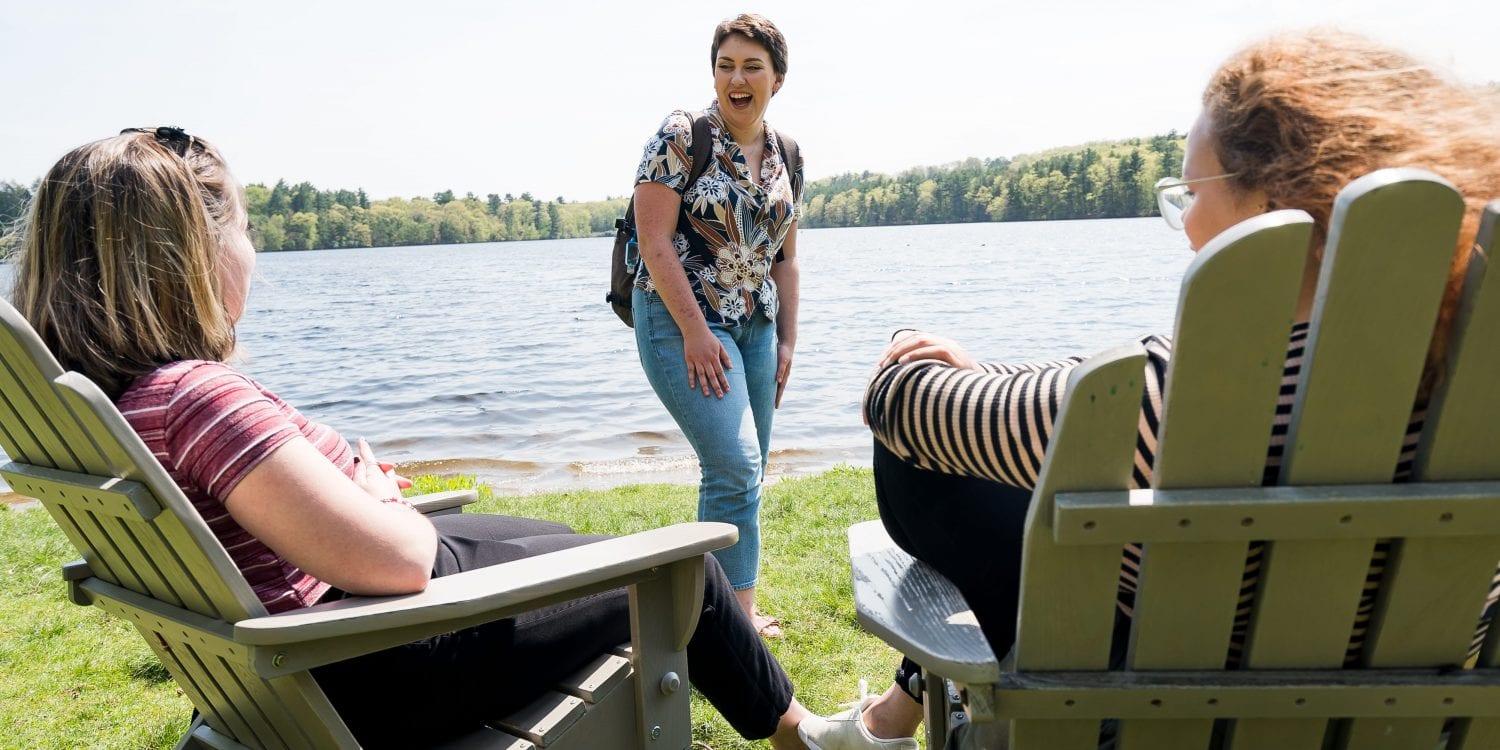I came to college thinking I might double major in English and Spanish with a minor in math. I’m not taking classes in any of those subjects. The course catalog turned out to be way too broad and deep for me to stick to what I already knew and liked.
My first-year seminar—a discussion-based class just for first-year students—is in the Environmental Studies department. It’s called How to Save the Planet, and so far it’s been about changing people’s minds and behavior.
I signed up for Intro to Peace & Justice Studies because it’s a prerequisite for a course on the Israeli-Palestinian conflict, which has fascinated me for years. We’ve defined all sorts of violence and various types of peace and discussed ideas of how to get from the latter to the former.
U.S. Immigration, crosslisted between the Sociology and American Studies departments, is all about why people migrate and how they maintain relationships across borders.
And Computing for the Socio-Techno Web, which I’m taking mostly for the math requirement and to give CS another try, is what my brother (who goes to a tech school) calls “the liberal arts version of computer science.” He’s not wrong. We do some coding, and we also discuss the social implications of various technologies.

My friend and I had a photoshoot by the lake last weekend! I gave her my camera for a minute, so here’s a rare photo of me.
I spread my classes pretty widely across my interests. But more often than I expected, something comes up in one class that builds on what I’ve covered in another.
Remember how my ES class is all about changing people’s minds? In September, we listened to a podcast about a study that showed people’s minds were changed on difficult issues by sending out canvassers who were directly affected by those issues. In sociology yesterday, my professor played an NPR segment on DACA and asked how we approach conversations with people who disagree. One of my classmates—who isn’t in my first-year seminar—brought up the same study we’d discussed in ES (which was actually debunked, but the aforementioned idea is still valid).
Changing minds peacefully has also been a big talking point in PJ. The past few classes have been about nonviolence as a strategy for making change—think Gandhi and MLK, but the same methods can also apply to changing an individual’s mind.
In PJ we’ve talked a lot about structure in terms of structural violence, like systemic racism and injustice in the courts. Well, in CS, we read an article about software created to predict the likelihood that a defendant will commit another offense. It turned out to predict more crime-filled futures for black people than for whites, causing prosecutors to give them more serious sentences. Structures are also relevant to ES in that they affect whether people engage in sustainable behavior. If grocery stores don’t provide bags, customers will learn to bring their own.
Author and lawyer Bryan Stevenson, whose book Just Mercy we read in PJ, came up recently in sociology. During our unit about forced migration and slavery, we read an article of his that was part of The New York Times’s 1619 Project. My roommate, who’s in PJ, CS, and sociology with me, was like, “I could write my sociology paper on the book we read for PJ,” and it wouldn’t even be a stretch.
I love how my courses speak to each other. I’ve seen three different approaches to having polarizing discussions and three different ways we see the effects of racial bias. Sometimes I feel like I’m just taking one big class, but with four different professors. I didn’t do it on purpose, I swear.

I took photos at the NEWMAC semifinal volleyball game last night. It was intense. Wellesley lost, but they played some incredibly tight sets.

